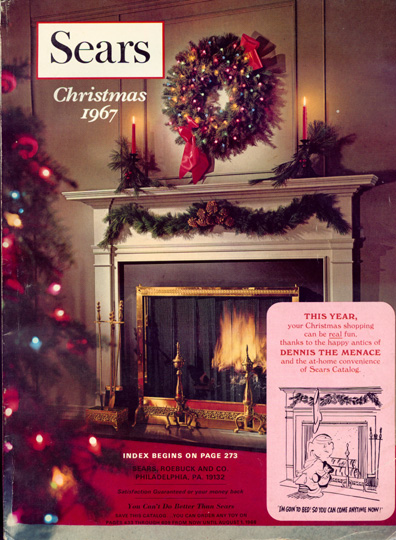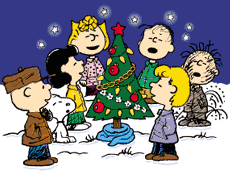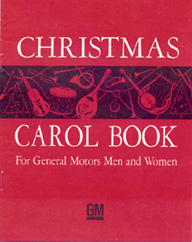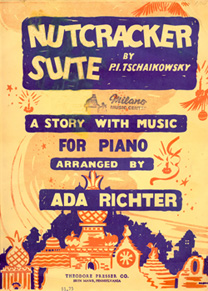Page A5 The Joan De Arc Crusader / Tuesday, December 25, 2001
Front Page A1 /
Editorials, Chuck's Corner A2 / Entertainment,
Sports A3 / Nostalgia A4
Special Christmas Section

The Sears "Wish Book" Christmas catalog
Defined Xmas for the Boomer generation
by J. Bueker
 The ultimate symbol of childhood materialism in the Baby Boom generation was
without a doubt the Sears Christmas catalog, popularly know as the "Wish Book."
For a span of almost seven decades this treasured tome of toys, games and other
festive merchandise was the pre-eminent focus and symbol of childhood hopes and
dreams for the Christmas season. Typically made available in September of each
year, the Wish Book gave kids a full three months to plan and execute their
campaigns to secure their most desired Christmas goodies. Some parents even
refused to keep the book in the house, such was the relentless nature of the
excitement this catalog inspired in the hearts of American children.
The ultimate symbol of childhood materialism in the Baby Boom generation was
without a doubt the Sears Christmas catalog, popularly know as the "Wish Book."
For a span of almost seven decades this treasured tome of toys, games and other
festive merchandise was the pre-eminent focus and symbol of childhood hopes and
dreams for the Christmas season. Typically made available in September of each
year, the Wish Book gave kids a full three months to plan and execute their
campaigns to secure their most desired Christmas goodies. Some parents even
refused to keep the book in the house, such was the relentless nature of the
excitement this catalog inspired in the hearts of American children.
The Wish Book was traditionally divided into two major sections. The first
part featured boring adult clothing, tools and appliances, while the second half
was chock full of such wonderful toys, games and other luscious merchandise as
to whet the appetite of the most jaded of youngsters. Indeed, part of the wonder
of the Sears Christmas catalog was the extraordinary variety of items offered
from so many different companies and manufacturers-- G.I. Joe dolls and
accessories from Hasbro, race car sets from Aurora, board games from Milton
Bradley and Parker Brothers, toy forts and soldiers from Marx, Give-A-Show
Projectors and Easy Bake Ovens from Kenner, Barbies and Thingmakers from Mattel,
just to name a scant few.
The two discrete divisions of the catalog were separated by a detailed
index, including a separate index exclusively devoted to the toys. To endear the
Wish Book even further to the young ones, drawings of Dennis the Menace were
added throughout the toy section beginning in the 60s, featuring the young
rapscallion singing the praises of Sears merchandise while making miserable the
life of a certain Mr. Wilson. One could hardly turn a page or two without
encountering another amusing antic of the ubiquitous Menace.
Originally issued in 1933, the Sears Christmas catalog was last published in
1992, which was the largest Wish Book Sears ever issued. In 1998 Sears put the
Wish Book on line, where it may now be found at
www.wishbook.com.
For generations of American children, the Sears Wish Book Christmas catalog
provided endless hours of Christmas dreams, hopes and wishes, and a well
organized and attractive source of gift ideas for one and all. The passing of
the merchandise catalog from our lives is a sad one, but there can be little
doubt that the tradition of the Sears Wish Book will live on in the memories of
many of us, especially we Boomers who always knew the value of a good Christmas
wish.
The timeless magic of "A Charlie Brown Christmas"
by J. Bueker

On December 9, 1965, there
premiered on the nation's TV screens a sweet little Christmas cartoon that has
long since become an indispensable staple of the winter holiday season.
"A Charlie Brown Christmas"
was originally conceived as a means of capitalizing on the growing popularity of
Charles Schulz's cute little comic strip, but in the end it succeeded in raising
the world of Peanuts into an entirely different realm of sentiment and
meaning. The script was so cleverly and lovingly written, the music so
beautifully composed, arranged and performed, and the animation so simply and
faithfully realized, that "A Charlie Brown Christmas" became an instantaneous
holiday classic.
For starters, the soundtrack by The Vince Guaraldi Trio is superb. Fusing
such disparate elements as sparkling jazz piano and traditional Christmas
carols, the music created for the show holds up extremely well. The individual
pieces are instantly recognizable, and each can be easily associated with the
scenes within which they play. The matchless instrumental theme "Linus and Lucy," the original
carol "Christmas Time is Here," and the loving renditions of familiar classics
were all beautifully integrated into a coherent and flowing musical whole.
Virtually every sequence in the program deserves mention: Charlie Brown
confessing his holiday blues on the wall with Linus, his five cent psychiatric
session with Lucy, the snowflake catching contest in which Lucy declines to
participate (since "only January" flakes will do), Sally's avaricious letter to
Santa, Snoopy grooving to Schroeder's piano rehearsal, Charlie Brown and Linus'
fateful trip to the Christmas tree lot, Snoopy licking Lucy's face and winning
the Christmas decoration contest for his doghouse, and on and on.
Certainly the most poignant and memorable scene is that of Linus standing
alone on the school auditorium stage to recite the story of the birth of Jesus
directly from the Gospels-- all for the edification of Charlie Brown, who had
wondered aloud if anyone could tell him what Christmas is all about. Properly
inspired, Charlie determines to enjoy Christmas and decorate the pathetic tree
he has procured for the Christmas play, only to "kill" it by attaching a single,
shining orb. Linus comes to the rescue with his trusty blanket, and Charlie
Brown is redeemed in the eyes of his fellows. Such is the miraculous nature of
the Christmas season that a quintessential loser like Charlie Brown can become a
true hero to his peer group of cynical children. Only Linus is able to separate
himself from the others and rise above it all to deliver his lovely recounting
of the Nativity, thus putting the entire situation into perspective for his
little friends and for us as well.
Thematically, "A Charlie Brown Christmas" is a lamentation of the crass
overcommercialization of Christmas, and yet its unequivocal message is that the
true meaning of Christmas always remains absolutely unaffected by it all. The
beauty, innocence and sheer entertainment exemplified by "A Charlie Brown
Christmas" will ensure that it touches the hearts of young and old alike for
many, many Christmases to come.
Only a blockhead would disagree.
Yuletide music traditions on Joan De Arc Avenue
by J. Bueker


The Christmas season is one of rich tradition and ritual here on Joan De
Arc, from the Christmas lights dutifully strewn across our homes, to the fine
arts of caroling and baking, to the exchange of gifts, cards and seasons
greetings to friends, co-workers and loved ones alike. Taking our sleds over the
river and through the woods to grandmother's house may not be an option for
people living in the desert, but this is surely an ultimately minor deprivation.
The absence of snow on the ground has never proved an impediment to a genuine
enjoyment of this happiest of all holidays, as folks on our street have always
found many other ways of creating a festive holiday atmosphere. Perhaps the most
universal manifestation of the Christmas season here is the incredible variety
of music that has been performed and enjoyed from the beginnings of the street
in the early '60s.
The music of the Yuletide season has consistently found expression here on
the Avenue in many different forms: the Christmas concerts at Sahuaro School,
the groups of carolers going door to door even in the face of occasional apathy
or even hostility, but especially the individual families gathering and singing
together just for the sheer joy of it. Some Christmas song traditions arose from
television sources such as Alvin and the Chipmunk's chart topper "Christmas
Don't Be Late," or from "Frosty the Snowman" and "The Grinch Who Stole
Christmas," but generally the joy of Christmas music is shared within individual
families singing the traditional standards, standing around the piano or sitting
near the hi-fi set, sipping hot cocoa and making popcorn strings for the tree. 'Tis
safe to say that only in the safety and security of one's own home are many
people comfortable singing in front of others.
Some employers of Joan De Arc residents even issued materials for this very
purpose. General Motors, for instance, published a small carol book in the late
'60s, apparently in lieu of Christmas bonuses for certain of its employees.
Those families fortunate enough to number an experienced musician among their
members could listen to live renditions of everything from "Jingle Bells" to
Tschaikowsky's "Nutcracker Suite," but the mode of expression was of course
completely secondary to the importance of simple togetherness and familial love
on this grandest of all holiday occasions. Over the years, Joan De Arc Avenue
has seen plenty of both.
______________________________________________________________________________________________________________JDA
BONUS:
Click
HERE for a special Christmas crossword puzzle!
Front Page A1 /
Editorials, Chuck's Corner A2 / Entertainment,
Sports A3 / Nostalgia A4
Visit the Crusader on the
World Wide Web at
www.joandearcavenue.com

